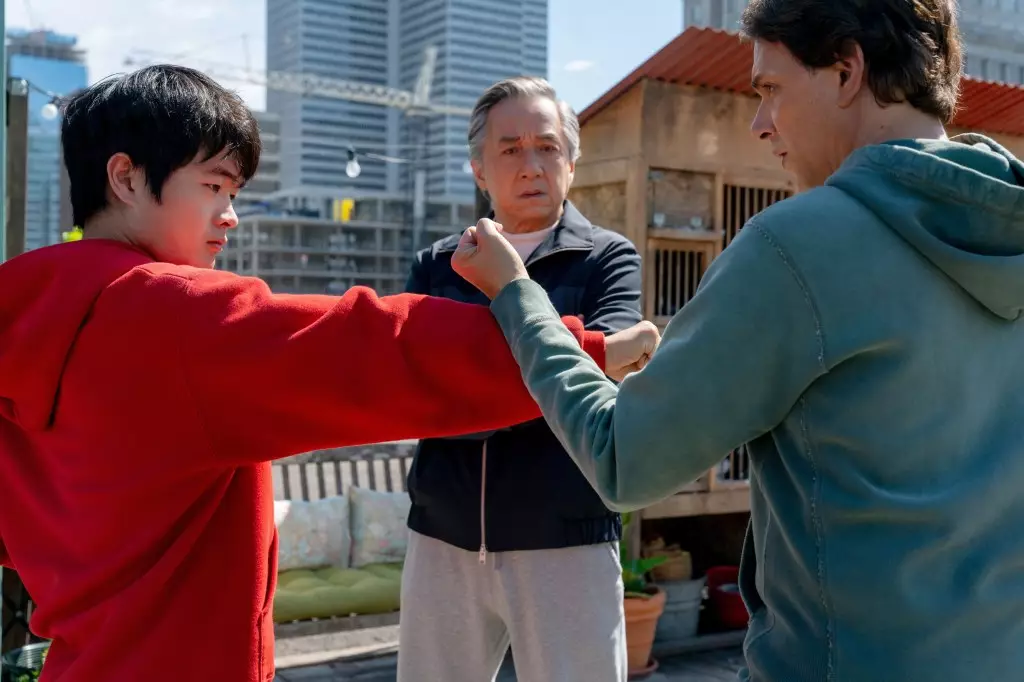Sony’s latest offering, *Karate Kid: Legends*, has stirred up nostalgic sentiments, bridging the gap between old-school fans and a new generation eager for martial arts excitement. This arrival is not just a film but an event—grossing $2.3 million from previews that kicked off at 2 p.m. on Thursday. The movie features iconic characters, with Ralph Macchio reprising his role as Daniel-san and Jackie Chan embodying the wise Mr. Han. Adding to the intrigue, the notorious Cobra Kai gang makes an appearance, reminding audiences why this franchise has maintained relevance through decades.
Despite initial enthusiasm, *Karate Kid: Legends* is not without its critiques. The film appears to be grappling for critical acclaim, currently holding a score of 55% on Rotten Tomatoes—slightly below the 67% garnered by the 2010 reimagining. While the nostalgia factor plays heavily into the viewing experience, the critical reception underscores an expectation that this new installment might not quite hit the thrilling notes of its predecessors. Audiences, however, seemed to be more favorable, as highlighted by a 4-star rating from PostTrak, with a recommend rate of 68%.
Audience Demographics and Insights
Understanding the audience profile is crucial for any film, and *Karate Kid: Legends* certainly has tapped into a specific demographic. Notably, boys aged 10-12 made up 64% of the under-12 audience—indicative of the ongoing influence of the *Cobra Kai* series on younger viewers. The male engagement was strong, constituting 60% of last night’s ticket sales. This showcases a multi-generational appeal, as families flock to theaters to introduce their kids to a franchise that shaped their own childhoods.
Yet, with a budget of $45 million, the financial stakes are high, especially as the film competes against heavyweights in the box office arena. Its earnings must be scrutinized in light of its production costs and against competitors like Disney’s *Lilo & Stitch*, which is expected to make a staggering $60 million in its second weekend. The potential clash highlights the challenges for *Karate Kid: Legends* as it navigates a crowded marketplace.
The Horror Landscape: Bring Her Back
On a different cinematic front, A24’s *Bring Her Back* seems to be carving out its niche as a horror offering. The film managed to pull in $850,000 during previews, a promising start as it heads into the weekend. Despite lower expectations relative to *Karate Kid: Legends*, it presents an enticing alternative for horror enthusiasts. The film’s positive reception among female audiences, particularly women over 25 giving it an impressive 83% recommendation rate, demonstrates an increasing shift in the horror genre that appeals to broader demographics.
The contrast in audience reception between *Bring Her Back* and *Karate Kid: Legends* is notable; while the former aims to garner excitement through suspense and thrill, the latter leverages nostalgia and legacy. However, the horror film’s earning predictions appear modest at $5 million to $7 million, showcasing how even well-received horror films can face an uphill battle against major franchises dominating the box office.
Conventional Heavyweights and Their Resilience
While new entries like *Karate Kid: Legends* and *Bring Her Back* make waves, established franchises continue to dominate. *Mission: Impossible – The Final Reckoning* has maintained its robust performance, amassing an estimated $95.3 million in its first week. This puts it in strong competition with earlier installments in the series, reflecting the franchise’s ability to sustain audience interest. The ongoing success of both *Mission: Impossible* and *Lilo & Stitch* paints a vivid picture of a film landscape where legacy and familiarity often triumph over new and daring concepts.
As films battle for box office supremacy, the weight of audience expectations becomes ever clearer. Nostalgia plays a pivotal role, serving as both a boon and a challenge for cinematic newcomers. For *Karate Kid: Legends*, the balancing act of honoring its roots while appealing to contemporary sensibilities paints an intricate picture of the modern film-going experience. The audience is not merely passive; they are actively shaping the narrative and direction of these storied franchises.
